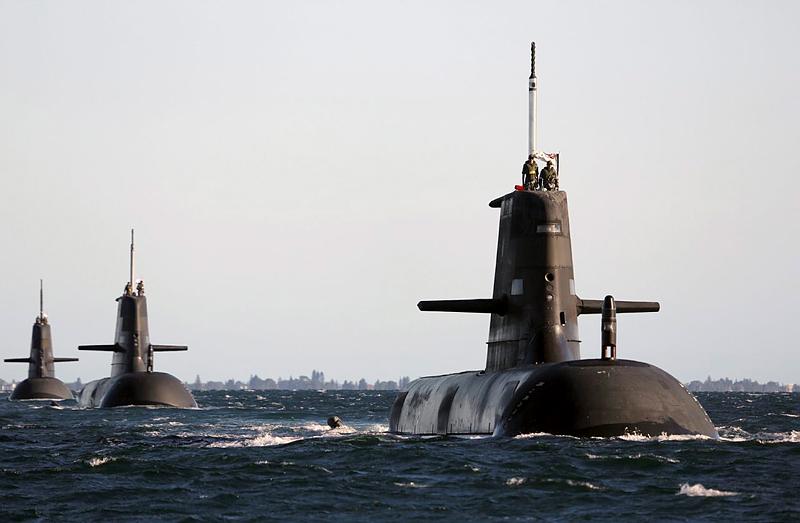Money it would seem really is the root of all evil, or at least the lack of it! Many defence commentators would agree with George Bernard Shaw in that judgement. The problem for Australian defence—and for most similar defence forces—is that not only is there never enough but the tenor of the times seems to suggest a continuing shortage. Just last week the Governor of the Reserve Bank, Glenn Stevens, was warning once again that future Australian governments needed to be fiscally prudent and avoid ‘budget splurges’. These aren’t happy times for those for whom the scale of a budget is considered directly related to strategic success.
There’s no getting around hard facts. The Defence budget isn’t as big as it was planned to be several years ago, and this translates into insufficient cash to buy all the new capabilities planned several years ago. With less money you have to buy less, at least in a quantity sense.
Defence is of course all relative. Realists do have a point in asserting that relative military power is important in the hard business of killing people and breaking things. Superior military might is very handy to have—although not the only factor in avoiding defeat, as the Taliban or North Vietnamese might contend. Even so, how are other countries placed as the Australian budget declines?
Firstly, thanks goodness we didn’t have a recession post-GFC. The Australian economy has grown more than 10% since then, whereas some others contracted by 10%. It’s conceivable that had our GFC experience gone differently, we might’ve kept spending the same percentage of GDP on Defence but this figure might have been quite a lot lower in absolute terms than the current budget.
Secondly, in our decline we’re to some extent simply keeping up with the Joneses. At the end of the Cold War regional nations spent an average of 3.5% on defence and since then have on average ramped down. East Asian US-allies and non-US allies on average now spend about 1.73% GDP on Defence (2012 figures). East Asian nations are certainly wealthier than ever before, but it seems that in general they’d rather spend more in percentage terms on other areas of government spending than on arms. Australia has mirrored this long-term regional decline in spending, from about 2% on defence at the end of the Cold War to about 1.6% of GDP in the 2013 budget. (For those interested in more global matters, it seems Latin America has also closely followed the East Asian trendlines). But the problems of others are the problems of others, and it’s really all about us. What can Australian Defence do with cash now at a premium?
Defence has some real discretion and there are choices that can be made in addressing capability needs. The more expensive options don’t necessarily have to be selected when building a balanced force which represents a complex portfolio purposely designed to solve hard problems. ASPI analysis illuminates this option. The two big items in the long-term defence capability plan are the Joint Strike Fighter (JSF) and the new submarine purchase. Really the plan is simply a collection of small projects fitted in around these two behemoths! ASPI’s Andrew Davies suggests that ‘buying more (numbers) of a bit less’ (in unit capability and price) could be the right answer for air combat. And a large difference in price separates off-the-shelf submarines from the next-generation Collins Class—suggesting that savings could be had by stepping down in either capability or numbers. Platform type selection and the numbers bought are choices that can have big long-term budget impacts and impose considerable opportunity costs, adversely impacting a balanced force. And it’s very much an ADF choice as to what is recommended to government.
Defence can also cut operating costs, which would free up more money from a fixed budget to spend on other areas. In the near-term there’s less choice than might seem as the extensive out-sourcing of maintenance means that contracts are in place that must be honoured. Even so, DMO would claim some success in reversing previous spendthrift ways and this field has real potential (PDF). In future new capabilities might be usefully chosen based at least partly on reducing—instead of always increasing—operating costs. There are alternatives to choosing the ‘more expensive to operate’ option.
Defence can plan for and factor in budgetary turbulence. In absolute terms, Defence spending effectively flatlined across the 1990s, rose sharply in the last decade and in first few years of this decade has gone both down and slightly up (PDF, see figure 8). Across this period, the Australian economy continually grew, unlike most other economies that were affected by periodic financial and economic crises. Such turbulence is endemic in the global economic system. The system has delivered great benefits but no one promised it would not be volatile—although many started to believe that before the GFC came along—and long-term defence plans should include such possibilities. Ignoring reality isn’t what defence realists should do!
Lastly, and most importantly, we’ve chosen to embrace risk management as the basis for defence planning. But there’s an alternative: strategy. Strategy is all about ‘ways’ unlike risk management, which is all about ‘means’. Strategy stresses intelligent thinking while risk management stresses spending. If there’s less money and so fewer ‘means’, then a better strategy may be able to use this reduced means in a way that still leads to a successful outcome. To quote Lord Rutherford—perhaps not coincidently a kiwi— ‘We’ve got no money, so we’ve got to think’.
Peter Layton is undertaking a research PhD in grand strategy at UNSW, and has been an associate professor of national security strategy at the US National Defense University. Image courtesy of Department of Defence.
